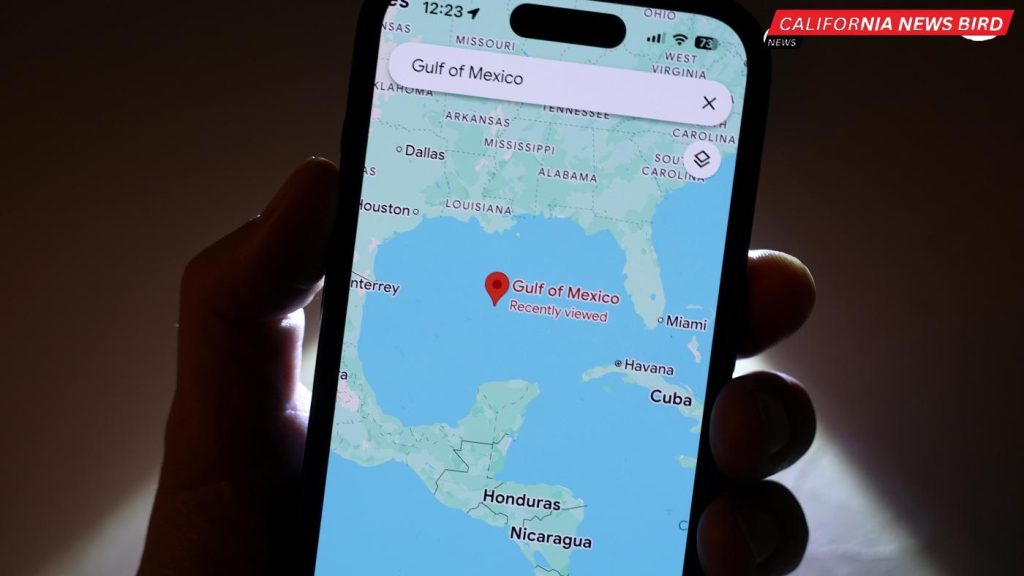/ Jul 05, 2025
Trending

In a surprising move that has sparked heated debate, former President Donald Trump issued an executive order on his very first day in office, declaring that the Gulf of Mexico will now be known as the Gulf of America. This change aims to boost national pride and reaffirm U.S. claims over the resources found in this vast body of water. But is it as simple as it sounds? Let’s dive into what this means for the Gulf and its neighboring nations.
Initially, the change was met with little fanfare among the general public. Many people did not discuss the name change before Trump’s announcement. However, since the announcement, various federal agencies, including the National Weather Service, have begun to implement the new name. Even some private companies, like Google, have agreed to use the term ‘Gulf of America’ in their mapping services for U.S. users. However, the Associated Press has decided to stick with the original ‘Gulf of Mexico’, emphasizing a divide among media organizations on how to respond.
Changing the name of a geographic feature is not an easy task, as it involves updates to official databases like the Geographic Names Information System (GNIS). The U.S. Board on Geographic Names oversees the process to ensure consistency across federal usage. Typically, changing a name requires public support and discussions within various agencies. In this case, however, Trump’s executive order bypassed many of the usual steps, leading to concerns about the implications of such unilateral decisions.
On the other side of the Gulf, Mexico’s response has been quite strong. President Claudia Sheinbaum openly criticized the U.S. decision and pointed out that the U.S. cannot unilaterally rename a body of water that extends beyond its territorial reach of 12 nautical miles. She argued that international law, specifically the United Nations Convention on the Law of the Sea, plays a crucial role in such matters, and the renaming could stir tensions between the two nations.
As federal agencies adjust to the name shift, it leaves many wondering how widespread the adoption will be. Some agencies are already using the term ‘Gulf of America’ in their communications. Google appears to follow suit, yet their motivations seem to be more of a business strategy than a stance on the name’s political implications. Contrarily, other firms, including the Associated Press, remain firm in using ‘Gulf of Mexico’, suggesting that the matter could be far from settled.
This isn’t the first time a body of water has had a name change due to political reasons. Different countries have their own names for the same geographic features, reflecting historical tensions and cultural differences. For example, the South China Sea is known by several names depending on who you ask, and the Arabian Peninsula sometimes goes by the Persian Gulf in certain areas. Experts warn that frequent changes in place names can create confusion and may undermine the significance that these names hold.
| Country | Body of Water Name | Alternate Name Used |
|---|---|---|
| China | South China Sea | South Sea |
| Iran | Persian Gulf | Arabian Gulf |
| Mexico | Gulf of Mexico | Gulf of America (new) |
The name ‘Gulf of America’ has sparked various opinions among experts as well. Some believe that such changes can set a troublesome precedent for future actions concerning international waters. They worry that altering names for political reasons could lead to complexities in international relations and cloud the understanding of historically significant regions.
As the new name takes hold, many will be watching to see if it sticks and what impact it has on U.S.-Mexico relations and global perceptions of the names assigned to our oceans and seas. With tensions already brewing, one can only wonder what’s next for this iconic body of water.
In a surprising move that has sparked heated debate, former President Donald Trump issued an executive order on his very first day in office, declaring that the Gulf of Mexico will now be known as the Gulf of America. This change aims to boost national pride and reaffirm U.S. claims over the resources found in this vast body of water. But is it as simple as it sounds? Let’s dive into what this means for the Gulf and its neighboring nations.
Initially, the change was met with little fanfare among the general public. Many people did not discuss the name change before Trump’s announcement. However, since the announcement, various federal agencies, including the National Weather Service, have begun to implement the new name. Even some private companies, like Google, have agreed to use the term ‘Gulf of America’ in their mapping services for U.S. users. However, the Associated Press has decided to stick with the original ‘Gulf of Mexico’, emphasizing a divide among media organizations on how to respond.
Changing the name of a geographic feature is not an easy task, as it involves updates to official databases like the Geographic Names Information System (GNIS). The U.S. Board on Geographic Names oversees the process to ensure consistency across federal usage. Typically, changing a name requires public support and discussions within various agencies. In this case, however, Trump’s executive order bypassed many of the usual steps, leading to concerns about the implications of such unilateral decisions.
On the other side of the Gulf, Mexico’s response has been quite strong. President Claudia Sheinbaum openly criticized the U.S. decision and pointed out that the U.S. cannot unilaterally rename a body of water that extends beyond its territorial reach of 12 nautical miles. She argued that international law, specifically the United Nations Convention on the Law of the Sea, plays a crucial role in such matters, and the renaming could stir tensions between the two nations.
As federal agencies adjust to the name shift, it leaves many wondering how widespread the adoption will be. Some agencies are already using the term ‘Gulf of America’ in their communications. Google appears to follow suit, yet their motivations seem to be more of a business strategy than a stance on the name’s political implications. Contrarily, other firms, including the Associated Press, remain firm in using ‘Gulf of Mexico’, suggesting that the matter could be far from settled.
This isn’t the first time a body of water has had a name change due to political reasons. Different countries have their own names for the same geographic features, reflecting historical tensions and cultural differences. For example, the South China Sea is known by several names depending on who you ask, and the Arabian Peninsula sometimes goes by the Persian Gulf in certain areas. Experts warn that frequent changes in place names can create confusion and may undermine the significance that these names hold.
| Country | Body of Water Name | Alternate Name Used |
|---|---|---|
| China | South China Sea | South Sea |
| Iran | Persian Gulf | Arabian Gulf |
| Mexico | Gulf of Mexico | Gulf of America (new) |
The name ‘Gulf of America’ has sparked various opinions among experts as well. Some believe that such changes can set a troublesome precedent for future actions concerning international waters. They worry that altering names for political reasons could lead to complexities in international relations and cloud the understanding of historically significant regions.
As the new name takes hold, many will be watching to see if it sticks and what impact it has on U.S.-Mexico relations and global perceptions of the names assigned to our oceans and seas. With tensions already brewing, one can only wonder what’s next for this iconic body of water.
It is a long established fact that a reader will be distracted by the readable content of a page when looking at its layout. The point of using Lorem Ipsum is that it has a more-or-less normal distribution of letters, as opposed to using ‘Content here, content here’, making it look like readable English. Many desktop publishing packages and web page editors now use Lorem Ipsum as their default model text, and a search for ‘lorem ipsum’ will uncover many web sites still in their infancy.
It is a long established fact that a reader will be distracted by the readable content of a page when looking at its layout. The point of using Lorem Ipsum is that it has a more-or-less normal distribution of letters, as opposed to using ‘Content here, content here’, making it look like readable English. Many desktop publishing packages and web page editors now use Lorem Ipsum as their default model text, and a search for ‘lorem ipsum’ will uncover many web sites still in their infancy.
The point of using Lorem Ipsum is that it has a more-or-less normal distribution of letters, as opposed to using ‘Content here, content here’, making

The point of using Lorem Ipsum is that it has a more-or-less normal distribution of letters, as opposed to using ‘Content here, content here’, making it look like readable English. Many desktop publishing packages and web page editors now use Lorem Ipsum as their default model text, and a search for ‘lorem ipsum’ will uncover many web sites still in their infancy.

The information provided by California News Bird is for general informational purposes only. While we strive to ensure that the content we publish is accurate, current, and reliable, we make no representations or warranties of any kind, express or implied, about the completeness, accuracy, reliability, or availability of the information, products, or services contained on our website.